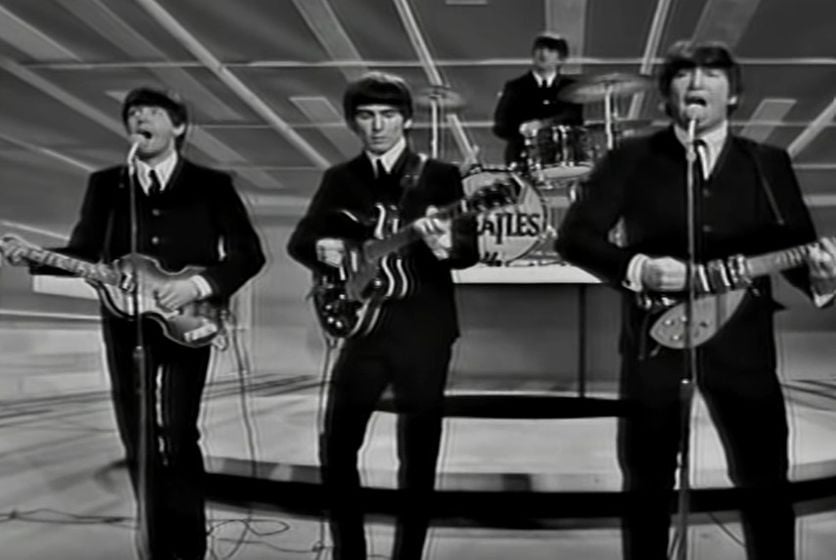By 1964 Beatlemania was in full effect on both sides of the pond and it was already bubbling away before The Beatles made their now-iconic debut on The Ed Sullivan Show on this day in 1964.
Despite what many people believe it was not the first time The Beatles had been on American television. The group were the focus of news pieces the previous year as the US established media tried to wrap their heads around these four mop-top lads from Liverpool.
The Beatles were being touted as the next worldwide craze and the first band to come out of England worth losing your cool over. It meant that a spot on Ed Sullivan’s variety show was an almost guarantee. The show’s reputation for launching acts was beginning to gather momentum and the chance to be broadcast to 100 million televisions-set owners was surely too big to turn down for the Fab Four.
Yet, the band knew their worth even then. Instead of happily signing on the dotted line for the payment of ‘exposure’ the group demanded their travel fees be covered as well as a $10,000 appearance fee. It was unprecedented and saw the show’s producers, for the first time, trying to negotiate a deal with their scheduled act. If The Beatles would perform three shows, they would have a deal—The Beatles were coming to America.
The show will go down in history as one of the most organically engaged with shows of all time. The Ed Sullivan Show could draw in an audience when needed but this was unheard of. As Paul McCartney remembers in Anthology: “Seventy-three million people were reported to have watched the first show. It is still supposed to be one of the largest viewing audiences ever in the States.”
“It was very important. We came out of nowhere with funny hair, looking like marionettes or something. That was very influential. I think that was really one of the big things that broke us – the hairdo more than the music, originally. A lot of people’s fathers had wanted to turn us off. They told their kids, ‘Don’t be fooled, they’re wearing wigs.’”
“A lot of fathers did turn it off, but a lot of mothers and children made them keep it on. All these kids are now grown-up, and telling us they remember it. It’s like, ‘Where were you when Kennedy was shot?’ I get people like Dan Aykroyd saying, ‘Oh man, I remember that Sunday night; we didn’t know what had hit us – just sitting there watching Ed Sullivan’s show.’ Up until then there were jugglers and comedians like Jerry Lewis, and then, suddenly, The Beatles!”
It’s an interesting notion to comprehend. Yes, America had been the birthplace of rock and roll but on the television at least, it had been heavily sanitised for the viewing public. Now, Paul McCartney, John Lennon, George Harrison, and Ringo Starr were managing to upset the nation without ever really doing anything untoward.
Despite over a third of America tuning in to see the moment The Beatles broke America, Ray Bloch, the show’s musical director wasn’t so keen on the band, he said to The New York Times: “The only thing that’s different is the hair, as far as I can see. I give them a year.”
Arriving at Studio 50 in New York, ready for their live debut on US TV, the group were in fine form and ready to rock and roll. That live debut was broadcast from 8-9 pm, and was witnessed by just 728 people in Studio 50, but saw an estimated 73,700,000 viewers sit down in 23,240,000 homes in the United States to watch the band perform. It comfortably smashed the record for television viewing figures up until that point.
George Harrison once remarked of the show’s importance: “We were aware that Ed Sullivan was the big one because we got a telegram from Elvis and the Colonel. And I’ve heard that while the show was on there were no reported crimes, or very few. When The Beatles were on Ed Sullivan, even the criminals had a rest for ten minutes.”
The Beatles performance was nothing short of ground-moving for those who watched it. They sang ‘All My Loving’, ‘Till There Was You’ and ‘She Loves You’, in the first half of the programme, followed by an advertisement break.
During ‘Till There Was You’ a notable moment of Beatles iconography took place as each member of the band was captured by the television cameras with their name as a caption on the screen. When the cameras arrived at John Lennon an extra caption read “Sorry girls, he’s married”.
Ed Sullivan’s other guests – Georgia Brown & Oliver Kidds, Frank Gorshin, Tessie O’Shea – followed, after which The Beatles returned to the stage and performed ‘I Saw Her Standing There’ and ‘I Want To Hold Your Hand’. It would be one of the most groundbreaking moments in music and television.
The Beatles, for an hour on Sunday 9th February 1964, brought America to a standstill and then got them all dancing.

